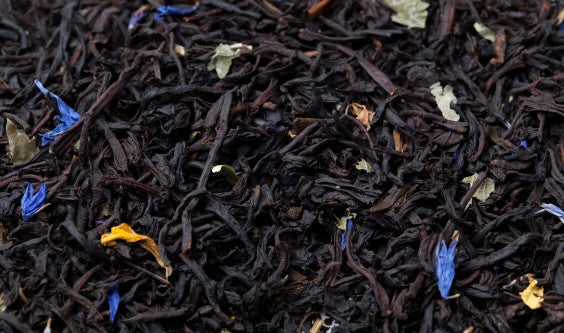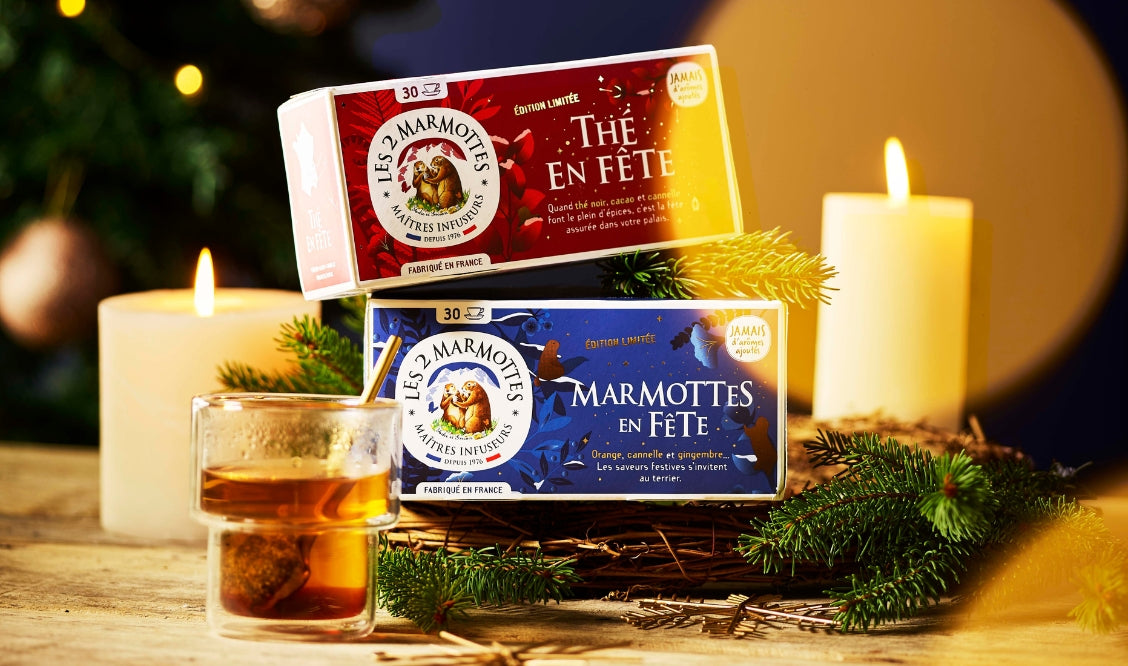It's one of the most popular teas, and yet... Earl Grey tea is steeped in an ocean of secrets. Dive with us into the legend of this unique tea.
A famous black tea with bergamot , Earl Grey tea has made a name for itself among all tea lovers who swear by its delicate citrus fragrance.
But how did a tea from China meet bergamot, a fruit native to Italy? And who would have bet on their getting along? This is what we will discover in this investigation worthy of Sherlock Holmes.
Earl Grey tea is called all capital letters because it takes its name from Charles Grey, a 19th-century Briton.
"Earl" is a title in the United Kingdom, which corresponds to the French "comte".
"Earl Grey Tea" means "Count Grey's Tea" in French, in homage to Charles Grey, 2nd Earl of the name.
At least, that's what the "official legend" says!
A bit ahead of his time, Charles Grey was the kind of man who made a difference: he is responsible, among other things, for the abolition of slavery in England, a reform of the law on child labor, a revision of the electoral system law, and, as far as we're concerned, the famous Earl Grey black tea!
There are three conflicting versions of the origin of the recipe for this classic afternoon tea.
The first tells of Charles Grey, who was offered tea after saving a Chinese man during a diplomatic trip to Asia. The only problem is that good old Charles has apparently never set foot in the Middle Kingdom.
The second version is less heroic but much more clever:
Variant 1 of version 2 (yes, there are sub-versions, we're following along!): disgusted by the taste of the water in the North of England, Charles Grey is said to have asked for a solution to restore the flavor of his tea. This is where the bergamot slices, then the bergamot essential oil, came into play!
Variant 2 of version 2: Lord Grey is said to have received a bergamot fruit as a gift, and not knowing how to eat it, he cut it up and dipped it into the cup of tea he was drinking at tea time. So British!
In both cases, thanks to its fragrance, bergamot would have scored points with all those who had the honor of tasting this improved tea and would have been definitively adopted.
Third hypothesis: the recipe for Earl Grey tea was born in a particular diplomatic context for which Charles Grey was responsible. As Prime Minister, he decided to end the East India Trading Company's monopoly in China. Suddenly, the Chinese had the opportunity to export their tea wherever they wanted. It was to thank Charles for this political gesture that a Chinese diplomat offered him some tea, which then took the name Earl Grey. Except that bergamot was not known in Asia at the time...
In short, the road to truth is still long! 2 things are certain:
1/ Charles Grey certainly has something to do with it.
2/We do not write " Earl Grey tea " with an A for fear of ruining the name of Earl Grey, who, gentleman though he may be, would certainly not have appreciated it...
After China, it is in Italy that you must venture to discover the mysterious bergamot.
Fruit of the bergamot tree , this citrus fruit , born from a cross between the citron and the bitter orange, has been cultivated since the 18th century on the peninsula, mainly in Calabria.
With its strange, swollen appearance, it is first and foremost the fruit of the bergamot tree that makes people talk.
It was then the turn of bergamot essential oil, made from its bark, to be in the spotlight as a perfume (which was supposedly all the rage at the Court of Louis XIV...definitely, one legend leads to another legend!).
Today, this precious oil is used half in perfumery/cosmetics, and half in food. Bergamot is found in sweets, madeleines, and of course, Earl Grey tea.
Beyond its unique fragrance, it was said at the time that bergamot was known to help fight digestive disorders. It also helped reduce stress levels and fatigue. With black tea , bergamot therefore forms an iconic and invigorating duo!
Earl Grey tea's rise to prominence at teatime is likely due in part to the influence of the Grey family. They were apparently so proud of their bergamot-infused black tea that they served it at every turn. Earl Grey thus became the fashionable tea for afternoon tea.
But if it has survived through the ages and trends, it is above all thanks to its unique taste! The perfect balance between the bitterness of black tea and the tangy flavor of bergamot have made Earl Grey tea a treat for the taste buds.
Little by little, new variations have even appeared, such as the famous Lady Grey tea , a black tea with orange and lemon zest, or French Earl Grey tea with rose petals , or London Fog, which is an Earl Grey tea with a hint of milk. + vanilla.
There's no time like the present to enjoy Earl Grey tea ! Well, there is... anyway.
If you are sensitive to caffeine , it is best to avoid drinking black tea late at night or before bed. On the other hand, Earl Grey is perfectly suitable for breakfast and afternoon tea.
Like the Thé Réveille des 2 Marmottes or the Coup de Boost infusion , it provides energy and a good dose of pleasure.
Earl Grey of the marmots




